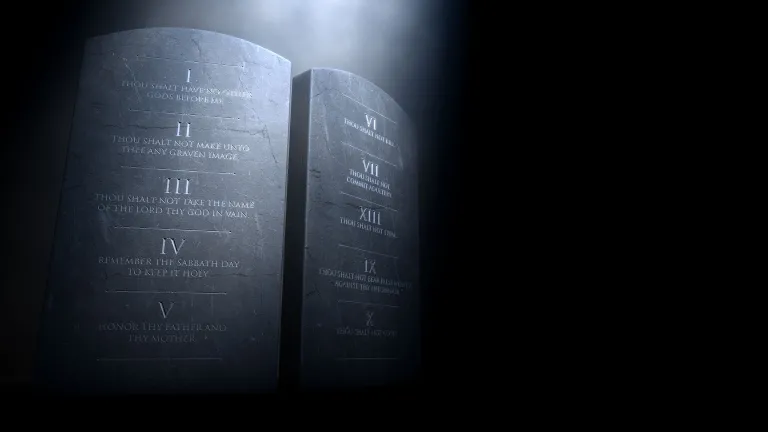The Gay Agenda Blueprint: A Plan to Transform America

The startling shift in American attitudes toward gays and same-sex marriage is not the result of chance or random events. More than a quarter century ago, gay strategists laid out a plan to transform the nation—with astounding success.
Do you consider yourself an independent thinker? What is the source of your conclusions regarding right or wrong? How do you determine your opinions regarding the news and political events?
Professional marketers develop strategies to influence and persuade potential customers to purchase their products. Some are very successful, as you can probably hum or sing dozens of pithy jingles or recognize the logos of many companies.
But you should also realize that people are affecting our culture who you’ve probably never heard of. How about Dan Wieden, co-founder of the advertising agency Wieden+Kennedy? Have you ever repeated the Nike slogan “Just do it”? Wieden developed that phrase in 1988.
Have you ever used the expression, “Where’s the beef?” Wendy’s hamburger chain profited from that slogan’s creator, Cliff Freeman, around 1984. You’ve probably never heard of him either.
You’ve also likely never heard of Marshall Kirk and Hunter Madsen. Nevertheless, these men have directly affected your life and American culture—strategically, gradually, subtly and definitely intentionally.
In the November 1987 edition of Guide, a magazine for homosexuals, the two men authored an article titled “The Overhauling of Straight America.” There Kirk, a researcher in neuropsychiatry, and Madsen, a public relations consultant, laid out a blueprint to fundamentally change Americans’ attitudes toward homosexuals and homosexuality. In 1989 they expanded that blueprint into a 398-page book titled After the Ball: How America Will Conquer Its Fear and Hatred of Gays in the 90s.
The “bible” of the homosexual agenda
Their goal was to make homosexuality acceptable and to forge negative opinions of any who disagree. The article began by stating: “The first order of business is desensitization of the American public concerning gays and gay rights. To desensitize the public is to help it view homosexuality with indifference . . . She likes strawberry and I like vanilla; he follows baseball and I follow football. No big deal.
” (We quote from the Guide article rather than the book, which at times is quite vulgar and graphic. Interested readers can find the article in whole or in part online.)
One person described “The Overhauling of Straight America” as the “bible” of the homosexual agenda. It is quite a contrast to the Bible of Christianity.
The authors, relating to the culture of the late 1980s, were realistic. They continued: “At least in the beginning we are seeking public desensitization and nothing more. We do not need and cannot expect a full ‘appreciation’ or ‘understanding’ of homosexuality from the average American. You can forget about trying to persuade the masses that homosexuality is a good thing. But if you can only get them to think that is just another thing . . . , then your battle for legal and social rights is virtually won.
”
To understand how startlingly successful their blueprint proved to be, consider this: In 1987, the year that article was published, Gallup polls showed that only 33 percent of those polled thought that same-sex relations between consenting adults should be legal, while 55 percent thought such action should be outlawed (numbers don’t total 100 percent because some offered no opinion). By 2015, the numbers were more than reversed—68 percent believed such sexual relations should be legal and only 28 percent were opposed.
Same-sex marriage was so off the radar that it wasn’t even asked about in Gallup polls until 1996, when only 27 percent approved and 68 percent were opposed. Today, Gallup polls show that 58 percent approve and 40 percent disapprove—another startling turnaround in attitudes.
Gallup polls in 1989 showed that only 19 percent of Americans believed people were born homosexual, with 48 percent believing it was due to environmental factors such as upbringing. By 2015 those numbers had dramatically shifted to 51 percent believing homosexuals were born that way and only 30 percent attributing it to other factors. (This is in spite of the fact that extensive genetic research and many studies of identical twins where only one was homosexual have disproven genetic determinism.)
Well-researched surveys (as opposed to some with markedly skewed samples and/or methodology) have consistently placed the homosexual population of America at around 2 to 3 percent—yet the influence of homosexuals on American culture is vastly out of proportion with their actual numbers. How did this come to be?
For those who remember what American culture was like in 1987 when the blueprint was first published, you can easily evaluate whether the six strategies they outlined have been successful. For those too young to remember the late 80s, consider how pervasive these things are in the culture you experience today.
What was their blueprint for overhauling American attitudes? Following are the six steps they advocated a quarter-century ago.
Step 1: “Talk about gays and gayness as loudly and as often as possible.”
Authors Kirk and Madsen say that “almost any behavior begins to look normal if you are exposed to enough of it . . . The way to benumb raw sensitivities about homosexuality is to have a lot of people talk a great deal about the subject in a neutral or supportive way . . . Constant talk builds the impression that public opinion is at least divided on the subject, and that a sizable segment accepts or even practices homosexuality.
Consider this quote: “And when we say talk about homosexuality, we mean just that. In the early stages of any campaign to reach straight America, the masses should not be shocked and repelled by premature exposure to homosexual behavior itself. Instead, the imagery of sex should be downplayed . . . First let the camel get his nose inside the tent—only later his unsightly derriere!
”
When we are exposed to anything repeatedly, it becomes routine and normal. What initially might shock someone eventually can become acceptable. And acceptability is the ultimate goal. What at one time was highly offensive to the vast majority of Americans is now no big deal. They’ve been lulled into complacency.
“Where we talk is important,
” wrote Kirk and Madsen. “. . . The average American household watches over seven hours of TV daily. Those hours open up a gateway into the private world of straights, through which a Trojan horse might be passed . . .
“So far, gay Hollywood has provided our best covert weapon in the battle to desensitize the mainstream. Bit by bit over the past ten years, gay characters and gay themes have been introduced into TV programs and films . . . On the whole the impact has been encouraging.
”
Have you noticed the number of homosexual characters appearing in TV programs and how they are overwhelmingly depicted positively? From a rarity on TV in the 1980s, such characters are now almost inescapable. A USA Today article last year reported 32 regularly appearing bisexual or homosexual characters in primetime network scripted series for the 2014-15 television season, with another 64 appearing in cable TV shows (Bill Keveney, “Yes, You Really Are Seeing More LGBT Characters on TV,” Oct. 1, 2014).
If a child grows up hearing about the gay lifestyle and seeing it portrayed positively his entire life, won’t that make it seem normal?
Kirk and Madsen also described a strategy by which the homosexual movement could counter and largely nullify opposition from America’s churches. They wrote: “When conservative churches condemn gays, there are only two things we can do to confound the homophobia of true believers. First, we can use talk to muddy the moral waters. This means publicizing support for gays by more moderate churches, raising theological objections of our own about conservative interpretations of biblical teachings, and exposing hatred and inconsistency.
”
This they have certainly accomplished—enlisting liberal scholars to explain away biblical teachings about homosexual practices, reinterpreting their plain meaning.
They continued: “Second, we can undermine the moral authority of homophobic churches by portraying them as antiquated backwaters, badly out of step with the times and with the latest findings of psychology.
”
Again, their strategy has succeeded remarkably well. Those who hold to biblical teachings about homosexuality and marriage are condemned as bigots, homophobes and backward thinkers who are a threat to progress. Some who have stood up have been fined, ordered to attend pro-homosexual “sensitivity training,” lost jobs or had their businesses sued out of existence by government agents and agencies that support the homosexual agenda.
The next step in their stated strategy similarly turns truth on its head.
Step 2: “Portray gays as victims, not as aggressive challengers.”
“In any campaign to win over the public, gays must be cast as victims in need of protection,” Kirk and Madsen wrote. Of course this does not address the issue of whether the gay lifestyle is right or wrong. It is an attempt to emotionally manipulate others with the motive of getting them to accept values they otherwise wouldn’t agree with
.
“If gays are presented, instead, as a strong and prideful tribe promoting a rigidly nonconformist and deviant lifestyle, they are more likely to be seen as a public menace that justifies resistance and oppression. For that reason, we must forego the temptation to strut our ‘gay pride’ publicly when it conflicts with the Gay Victim image
,” they wrote.
“. . . This means that jaunty mustachioed musclemen would keep very low profile in gay commercials and other public presentations, while sympathetic figures of nice young people, old people, and attractive women would be featured.
”
They then add this caution for those who would want to push the gay agenda too far: “It almost goes without saying that groups on the farthest margin of acceptability such as NAMBLA [the North American Man-Boy Love Association, which as its name suggests promotes adult-child homosexual sex] must play no part at all in such a campaign: suspected child-molesters will never look like victims . . .
“Straight viewers must be able to identify with gays as victims . . . To this end, the persons featured in the public campaign should be decent and upright, appealing and admirable by straight standards . . . they should be indistinguishable from the straights we would like to reach.
”
It should be obvious that we are beyond this strategy today. The gay community should no longer be considered victims in the United States—and in reality those in the gay movement have become aggressive challengers of traditional values and biblical beliefs on many fronts.
This brings us to the next step in their strategic blueprint.
Step 3: “Give protectors a just cause.”
“A media campaign that casts gays as society’s victims and encourages straights to be their protectors must make it easier for those to respond to assert and explain their new protectiveness. Few straight women, and even fewer straight men, will want to defend homosexuality boldly as such . . . Our campaign should not demand direct support for homosexual practices, [but] should instead take anti-discrimination as its theme
.
“The right to free speech, freedom of beliefs, freedom of association, due process and equal protection of laws—these should be the concerns brought to mind by our campaign.
”
Again, this tactic is antiquated now. Law and due process should’ve always protected all citizens equally. The real issue is whether there is a true Creator God who authored the Bible and if that God has the right to determine right and wrong and what is best for those He’s created.
Step 4: “Make gays look good.”
“In order to make a Gay Victim sympathetic to straights you have to portray him as Everyman. But an additional theme of the campaign should be more aggressive and upbeat: to offset the increasingly bad press that these times have brought to homosexual men and women, the campaign should paint gays as superior pillars of society.
”
This approach can be considered mission accomplished. Kirk and Madsen also pointed out the benefits of “the celebrity endorsement.” It doesn’t matter whether the celebrity is straight or gay, the important thing is the endorsement of homosexuality as normal.
Of course, most celebrities are part of the entertainment world, where values are overwhelmingly liberal and opposed to biblical standards. Is it any wonder that so many celebrities have “come out of the closet” in recent years or proclaimed their support for gays?
Step 5: “Make the victimizers look bad.”
Kirk and Madsen continued: “At a later stage of the media campaign for gay rights . . . it will be time to get tough with remaining opponents. To be blunt, they must be vilified . . . Our goal here is twofold. First, we seek to replace the mainstream’s self-righteous pride about its homophobia with shame and guilt. Second,
we intend to make the anti-gays look so nasty that average Americans will want to dissociate themselves from such types
” (emphasis added throughout).
“The public should be shown images of ranting homophobes whose secondary traits and beliefs disgust middle America
,” Kirk and Madsen wrote. To this end, they then suggested that those who oppose the homosexual agenda be linked with images such as the Ku Klux Klan, “bigoted southern ministers drooling with hysterical hatred,” thugs and convicts, and Nazi concentration camps.
This strategy—aided and abetted by sympathetic news media and government agencies—has led to us entering a stage of aggressive attacks by some in the gay community against those who sincerely believe that homosexual behavior violates the laws, instructions and principles of God. Bible-believing Christians are indeed “vilified” and branded as bigots and homophobes.
Do rights of freedom of speech, freedom of religious beliefs and freedom of association work both ways? We’re seeing a time in which constitutionally guaranteed citizens’ rights are being stripped away to accommodate new supposed rights invented by various court rulings and government policy.
Step 6: “Solicit funds: The buck stops here.”
“Any massive campaign of this kind would require unprecedented expenditures for months or even years—an unprecedented fundraising drive
,” they acknowledged.
Yet at the same time, they made a statement showing that gays really aren’t the oppressed, victimized group Kirk and Madsen advocate they be portrayed as: “Because those gays not supporting families usually have more discretionary income than average, they could afford to contribute much more.”
If you’ve ever wondered why so many American businesses cater to a gay clientele, donate money to support homosexual causes and celebrated the U.S. Supreme Court’s ruling legalizing same-sex marriage, it’s because they recognize this simple fact: Homosexual couples, who typically don’t have children, have substantially more discretionary income than families who do.
The impact of this is also being felt in the political arena, where wealthy gays help bankroll campaigns for sympathetic candidates who will advance their interests and fund ads attacking those who stand for traditional and biblical values.
Kirk and Madsen go on to praise the fact that homosexuals have been able to infiltrate American news media to advance the cause of issues important to them. “Because most straightforward appeals are impossible, the National Gay Task Force has had to cultivate quiet backroom liaisons with broadcast companies and newsrooms in order to make sure that issues important to the gay community receive some coverage.
”
In the 26 years since they wrote that, most U.S. media has tilted even more to the left, so proponents of the homosexual agenda are usually assured of favorable coverage and free publicity for their cause.
What is the right Christian response?
Those who believe the Bible and care about the future of America should be aware that today’s issues regarding the gay lifestyle have been orchestrated by activists for more than 25 years. This was no accident or chance course of events.
A gay person should not be afraid of a Christian as some hate-monger. True followers of Jesus Christ are to always show love toward others (Matthew 5:44), recognizing that all have sinned and need God’s mercy and forgiveness (Romans 3:23). But this does not mean excusing and accepting sin.
Recall that Jesus didn’t condemn a woman who was caught in adultery and brought before Him (John 8:2-11). But He didn’t say that what she was doing was acceptable either. He told her to “go and sin no more” (John 8:11). Moreover, He had to die to pay the penalty of her sin—and ours.
We should call sin what it is. And the Bible clearly labels homosexual activity a sin (Leviticus 18:22; Leviticus 20:13; 1 Corinthians 6:9-10). Of course, we must have compassion for those who don’t understand—and for those who do who struggle with this sin.
In communicating with others, Christians should be wise enough not to be trapped by phrases mislabeling the Christian approach. “Are you anti-gay?” can be a very misleading question. Understanding the definitions of someone you are having a discussion with is important. Acceptance, tolerance and inclusivity can be controversial and emotionally charged words.
Speaking on the issue of tolerance, mega-church pastor and bestselling author Rick Warren observed that our culture has accepted two huge lies. The first is that if you disagree with someone’s lifestyle, you must fear them or hate them. The second is that to love someone means you agree with everything they believe or do.
Both notions are nonsense. You don’t have to compromise convictions to be compassionate. Disapproval is not hate. Disapproval of what is wrong and harmful is a part of godly love.
Don’t let your life be controlled by the clever marketing of evil as good and good as evil. Look to God’s Word as the blueprint for your life. One day this wayward world and its vile influences will end, but the way of God will prevail. Stand firm with Him and you will stand forever!






